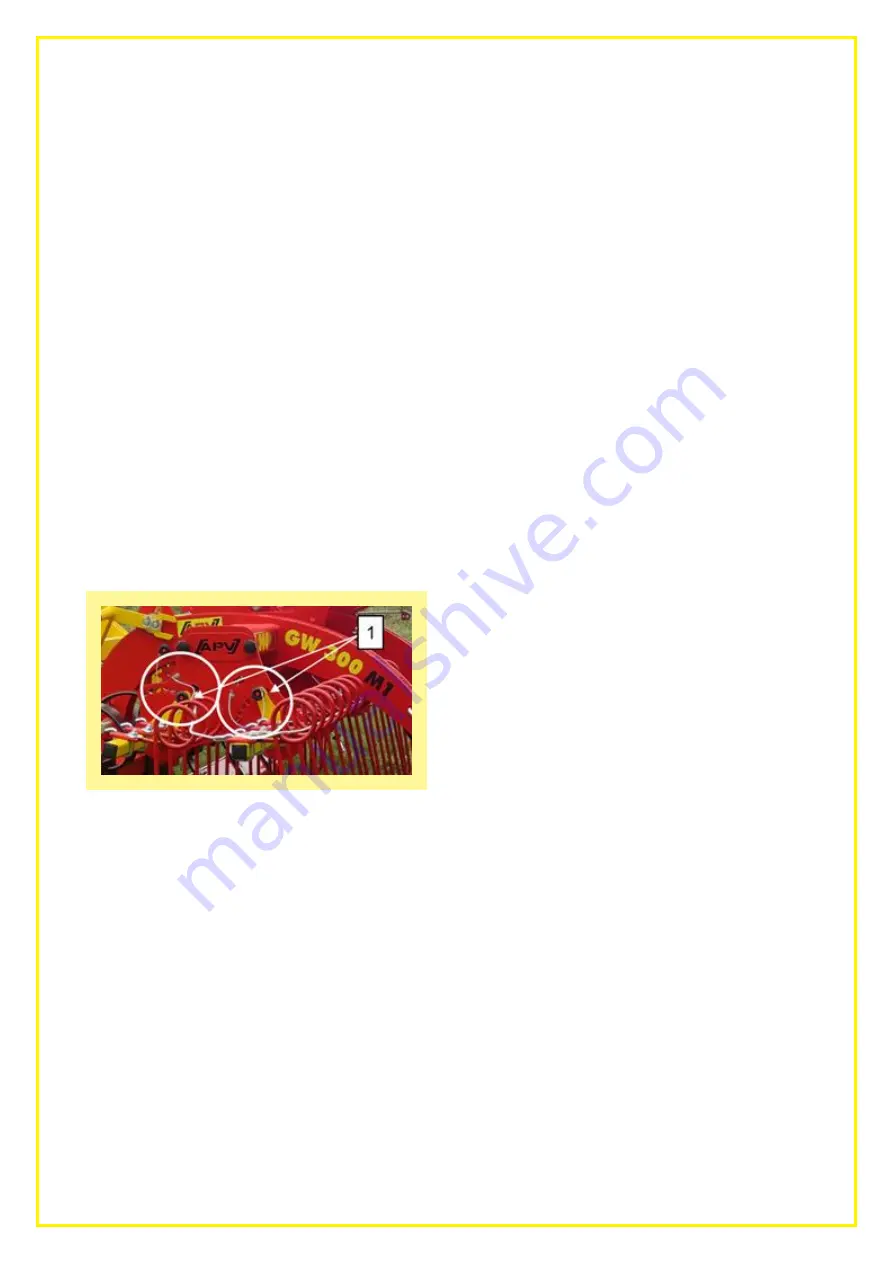
Translation of the original operating manual
Page 17
10 Working position and setting the working depth
10.1 Depth adjustment
To adjust the depth of the GK 250/300 M1, 2 work steps are required.
Depending on how aggressively you want to till the soil, slightly extend or retract the cylinder to
transfer the weight of the roller onto the harrow tines.
The lower link must be positioned such that the frame of the implement is horizontal to the field.
Reference points for this are the shaped tube (160 x 80 mm) or the pneumatic spreader (this
should be positioned vertically to the field).
During operation, the top link on the implement side must always be attached in the elongated slot.
For normal operation, the pin should be in the middle of the elongated slot.
If you want to use the GK 250/300 M1 with the roller lifted, i.e. the roller in the highest position and
the roller cylinder completely retracted, you must firmly attach the top link on the implement side.
This position must also be used in road traffic.
10.2 Aggressiveness adjustment
In addition to the depth, the aggressiveness of the tines relative to one another on the GK 250/300
M1 can also be changed. To do so, you only have to insert the pins for the harrow rows as desired
in a higher or lower hole. (Fig. 17)
Fig. 17
1:
Aggressiveness adjustment
This makes it possible to adjust the 2 harrow rows with 12 (10) mm tines at different degrees of
aggressiveness. This also allows for compensation of various degrees of wear on the tines.
The two rows of tines tear open the sward and produce an optimal seedbed for the new grasses. If
the front row of tines should work more aggressively (e.g. under hard soil conditions), you must
place the pin in one of the top holes at the rear. In this way, the aggressiveness of two rows can
adjusted independently.
For this purpose, you can select one of seven levels. At an optimal forward speed, the tines make
an elliptical motion. The steeper the position of the tines, the smaller the motion. The flatter the
position of the tines, the larger the motion. If the sward is dense and intense tillage is required, the
tines should be positioned more steeply (see Fig. 17).






























